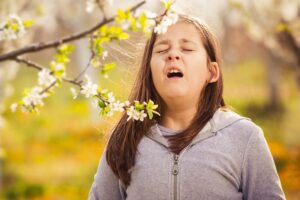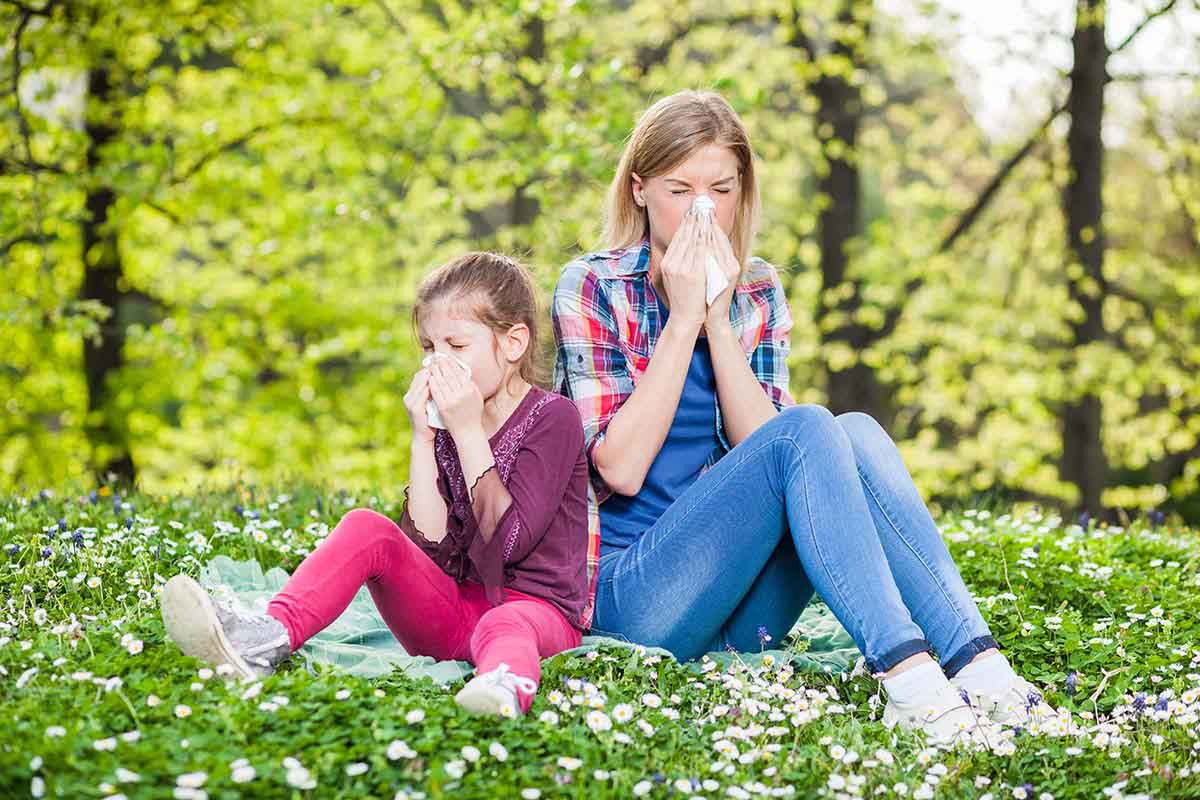With the turn of the season comes the pollen and allergens — which are never a good time for your child. Luckily, there are ways to combat this. Here’s how you can go about protecting your child against spring allergies.
Why do people suffer from spring allergies?
Spring is a time of year that can be both wonderful and troublesome for those with allergies. The abundance of pollen in the springtime can make it hard to breathe, causing sneezing, coughing, and general discomfort. Unfortunately, spring allergies are more than just a nuisance; they can severely impact your child’s quality of life if left unchecked. If you find yourself suffering from spring allergies it’s best to consult a doctor first, who might suggest over-the-counter or prescription medications as well as ways to minimize your exposure to allergens. Taking care of yourself during springtime with proper medication and protective measures can help make spring enjoyable instead of miserable!
Pollen is one of the most common triggers for spring allergies, and it can be found everywhere in the air during this time of year. Pollen is a fine powder released by flowering plants as part of their reproductive cycle. The pollen grains contain proteins that are allergens, which can cause hay fever and other respiratory issues when inhaled. To protect yourself from these allergens, you’ll need to take steps to reduce your exposure to pollen.
One way to do this is by avoiding outdoor activities during peak pollen times, typically early morning or late afternoon when the wind picks up and carries more pollen into the air. It’s also important to keep windows closed at home and in your car so that outside allergen levels don’t enter inside. Additionally, showering after spending time outdoors helps wash away any lingering pollens on your skin or clothing before coming inside where they could cause further irritation or allergy attacks. You should also try wearing protective face masks if possible while going about your daily routine, especially if you’re doing work outdoors like gardening or mowing grass where there will be high amounts of airborne particles present.
Looking at spring allergies and their symptoms
 Spring is quickly approaching and unfortunately, spring allergies are too. If you experience itchy eyes, coughing, sneezing, or a runny nose during spring, you may have spring allergies. To identify if your symptoms are caused by spring allergies or something else, keep track of how often they’re happening and when they start and stop. Knowing this information can help you get to the bottom of what’s causing your discomfort so that you can work with your doctor on the best course of treatment.
Spring is quickly approaching and unfortunately, spring allergies are too. If you experience itchy eyes, coughing, sneezing, or a runny nose during spring, you may have spring allergies. To identify if your symptoms are caused by spring allergies or something else, keep track of how often they’re happening and when they start and stop. Knowing this information can help you get to the bottom of what’s causing your discomfort so that you can work with your doctor on the best course of treatment.
Pollen allergies are one of the most common types of allergies, and they often become more noticeable during springtime. For those who suffer from pollen allergies, it can be difficult to enjoy warm weather activities due to the sneezing, coughing, itchy eyes, and runny nose that come with them. To better understand your symptoms and how you can best manage them this season, here is an overview of what you need to know about pollen allergy symptoms.
One of the hallmark signs of a pollen allergy is hay fever or allergic rhinitis. This condition causes inflammation in the nasal passages which leads to congestion as well as sneezing fits when triggered by allergens such as pollen particles in the air. Other common symptoms include a runny nose with clear mucus discharge along with red and itchy eyes caused by histamines being released into your system. In some cases, people may also experience headaches when exposed to high levels of allergens like pollen in their environment.
How you can protect your child against spring allergies
As spring rolls around each year, so do spring allergies. It can be difficult to protect your child and help them manage spring allergies, but there are a few measures you can take.
Stay indoors as much as possible, keep windows closed, and use an air conditioner
Firstly, keeping the windows closed to reduce pollen and other things drifting into the house. Secondly, keep your child away from freshly mowed grass which is known to contain allergens that can lead to spring allergies. Additionally, it’s important to keep an eye on your child who might suffer from spring allergies so they don’t suffer seriously or experience asthma attacks. Finally, carrying medication such as antihistamines is essential in the event of sudden onset symptoms of spring allergies.
Staying safe from air pollution is an important task to consider. Whether you are living in the city or in a rural area, it’s important to limit your exposure to air pollutants. Some of the things you can do to protect yourself include staying indoors as much as possible and using an air conditioner if you have one. It’s especially important to protect against these pollutants when they are at their peak, such as in the early morning, during rush hour and on windy days with heightened pollution levels. By limiting your exposure every day, you can help safeguard your health and well-being for years to come!
You should also have your child avoid touching their face, especially their eyes and nose
To make sure you’re keeping your child safe from potential illness and infection, it’s important that they learn from a young age to avoid touching their face as much as possible. While it may seem like a difficult task for even adults to manage, teaching your child about the germs on their hands can be a helpful reminder. Pointing out common spots in the environment that may carry bacteria or viruses such as doorknobs and playgrounds can help them stay aware of their hands during times outside the home. Especially when it comes to areas around the eyes, nose, and mouth — which are vulnerable to airborne particles — having your kids wash their hands frequently and not touch those areas is a great way to keep them healthy.
If you think your child may be suffering from allergies, consult with a doctor for proper diagnosis and treatment options
It is important to recognize the signs of allergies in children and to be aware of your child’s potential triggers. Allergies present themselves differently for each person, but common symptoms can include itchy eyes, sneezing, coughing and even difficulty breathing. If your child is experiencing any of these issues or reactions that seem out of the ordinary, consider consulting a doctor for proper diagnosis and treatment options. A doctor can help you identify if your child has an allergy and provide you with the appropriate treatment options. Doctors have access to tests and medications that will help ensure your child is living as comfortably as possible. Don’t wait too long to seek help from a professional when it comes to allergies – quick diagnosis and proper treatment are essential!
Allergies can cause a lot of distress for your children during the spring season, but taking preventative measures to reduce their risk can make all the difference. Make sure to be aware of certain signs such as sneezing, itchy eyes, and runny nose that might indicate your child may have allergies. Staying indoors and using an air conditioner along with other tips we’ve discussed here are surefire ways to help stop them from getting worse. Get advice from a professional if needed, too! Allergies can be hard to manage but by being mindful of them as soon as you find out, it will become easier to handle.
Remember, we are always here at Oasis Day Camps ready to provide information on relevant resources and all things related to camps — so don’t forget to visit our website and reach out. Let’s ensure your child has a happy and healthy springtime this year!


